Churches of Moldavia
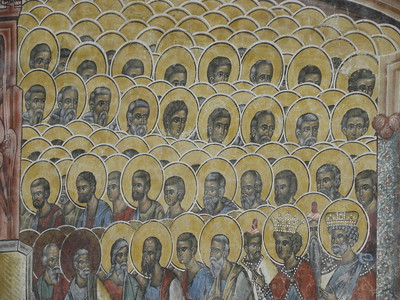
The Churches of Moldavia comprised eight Byzantine churches with painted exterior walls.
These paintings systematically cover all the facades with cycles of Orthodox Christian religious themes. The churches were built between ca. 1487 and 1532, as a protective barrier against the Muslim Ottoman conquerors from the East and during a period of cultural flowering of the newly independent state of Moldavia.
Community Perspective: these painted churches are in the highest category of WHS in Europe. You can easily spend a day or more driving between them.
Map of Churches of Moldavia
Community Reviews
Clyde

I visited all 8 components of this WHS by car in 2023 and if you have the time all are worth a visit for their interior as well as their exterior paintings. Apart from the one in Probota (road was still being paved when I visited), all locations are easily reachable by car on newly paved roads.
The Painted Church of Probota is not visible from outside as it is within a very high fortified monastery so make sure to check the opening hours before you visit. It is now run by a few dedicated nuns who look after the huge restored monastery, the foundations of an old monastery and its church. The best views are from on top the 6 meter defensive walls and towers. Not much of the exterior paintings remain but the interior paintings are truly beautiful. The most interesting interior painting is the votive painting in the nave.
By visiting uninscribed painted churches and monasteries (some are tWHS like Neamt) you'll be able to appreciate the great efforts during restoration of the paintings of the inscribed churches to remove the layers of black soot and wax from the countless candles lit inside over the years. Moreover, what I initially thought was an ugly reconstruction of some of the churches' enclosures with reinforced concrete and a crafty way to ensure collecting entrance fees (especially in Probota and Voronet), seems to be an essential layer of protection against the winter blizzard currents which have significantly eroded the exterior paintings there. Apparently these enclosures were dismantled in the past with the intention of "unblocking" the view of the churches in their natural surroundings; however, this lead to the almost immediate loss of the exterior paintings on at least one side of the painted churches.
The other 7 components are easier to visit in a loop using Suceava as your base. The painted church in Suceava is the largest and perhaps the one that has the most urban setting when compared to the others. Like the one in Probota, little is left of its exterior paintings, so its highlight is definitely its interior paintings. Quite close by, is the church of Patrauti, perhaps the smallest of the lot, which represents a valuable model of the Moldavian medieval era with high Gothic window frames (opened by the nuns using a long wooden stick) and facades symmetrically decorated under the cornice with ceramic friezes. The only exterior paint left is near the main entrance, just opposite a new wooden church and monastery on the other side of the road, which is where you have to go to seek the key if the church is closed. The interior paintings here are more impressive than the ones in Suceava and Probota and the highlight here for me was the mounted procession on the nave.
Another base you can use instead of Suceava is Gura Humorului. It is quite busy in summer with vans and buses as it the main (or only) stop for tourist groups in the Bucovina valley, visiting the painted churches of Humor (without a tower above the nave) and Voronet (with a tower above the nave). The exterior and interior paintings of both these churches are exquisite. The interior ones of Humor worth mentioning are those of the founders' portraits in the recesses of their burial place, and the Pantocrator, the Nativity of Jesus and the Baptism of Jesus paintings in the naves and narthex archway. The exterior ones of Humor are mostly on the southern facade and are the oldest frescoes in open air in the Bucovina valley. The highlights worth mentioning are the image of the Holy Mary holding her Child, the Siege of Constantinople (a historical error done on purpose) and the Last Judgement (a recurring theme if you visit all the locations). The interior and exterior paintings of Voronet are among the best restorations with literally every wall covered with paintings. The impressive blue colour of the exterior paintings gave birth to the phrase "Voronet blue", on par with the Veronese green and Tizian red. Quite close by the churches of Humor and Voronet, is the almost forgotten pretty church/chapel of Arbore. A cow chained to the ground was left grazing the small grounds here and it certainly happy to see me approach the church as the first visitor early in the morning. The highlights here are the multipictorial paintings on the western facade as well as the interior multipictorial paintings of the nave and narthex.
My personal favourites, for their architectural variety, their natural surroundings and the sublime interior and exterior paintings, are the painted churches of Moldovita and Sucevita. The exterior paintings of the church of Moldovita are quite similar to those of Humor but they have been preserved on all the facades of the church. My favourite exterior painting of Moldovita is the Tree of Jesse guarded by chieftains of the twelve Israel tribes. The interior paintings are also of top quality and a number of comparisons have been made to the icon painters of Novgorod of the 15th century (the Complaint of Jesus on the northern wall, the Last Supper, the Praying Virgin and the Crucifixion of Jesus are among the best interior paintings, although like Els I really loved spotting the unique tiny details such as a handful of nuns or the peasants' attire).
Last but not least, the painted church of Sucevita is situated at the highest altitude of all locations and lighting is best before sunset. From outside it resembles the fortified churches of Transylvania with its several gatetowers or a medieval citadel with a princely house, the monks' cells and a small chapel and cemetery just behind it. My favourite exterior painting of Sucevita and of all the painted churches of Moldavia is that of the Staircase/Ladder of St John Scararul also known as the Staircase/Ladder of Virtues) on its northern facade. It represents the spiritual climb up, guided by faith and good deeds, through which man could reconquer the paradise lost. The monastery's museum contains one of the richest and most valuable medieval art collections of Moldavia, for example the tomb covers or rugs of the princes Ieremia (1606) and Simion Movila (1609), considered as embroidery masterpieces and at the same time among the most successful secular portraits of the time, and the epitaph embroidered with 10,000 pearls. Inside the church, the votive paintings of Ieremia Movila and family and of Gheorghe Movila in prayer in the nave are those that stood out the most especially after having visited all 8 locations.
This is by far Romania's best WHS and it was a treat to visit all locations. Other uninscribed locations worth visiting in the area are Neamt (tWHS), Putna and Dragomirna. Being quite close to the Ukrainian border, tourist numbers seem to have dropped slightly, although the only signs of the war in Ukraine were the long convoys of aid by road and rail. After my near miss of Lviv from Zamosc, Poland, the Residence of Bukovinian & Dalmatian Metropolitans (near Chernivitsi) is yet another miss of Ukraine's WHS nearby, this time from Romania. Both would be relatively easy visits on a road trip but it'll be a visit (hopefully) for the near future. All 8 locations have brown signs displaying the UNESCO symbol (the one in Arbore is upside down like in Mazagan/El Jadida in Morocco as well as old information boards.
Persian Globetrotter
I visited the Churches of Bucovina on my trip to Romania in 2023. In my opinion it is one of the best WHS in Romania. Are Orthodox churches, colorful inside and outside with frescoes depicting biblical stories. I was able to visit four (Voronet, Humor, Sucevita and Moldovita + the Putna Monastery, which is not a UNESCO Site but is an important pilgrimage center in Romania. Votonet and Humor can be visited by electric bus from Gura Humurului, the rest I stayed at Casa Popa in Gura Humurului where the owner of the house offered to drive his car to the monasteries. I recommend staying at that accommodation. Of the four I consider Sucevita and Moldovita the most favorites.
Read more from Persian Globetrotter here.
John booth

During the course of a single day I managed to visit all eight of the listed churches, thanks to the advice and help I received. As it was a Sunday all the churches were open, and many of them well populated. Only at Patrauti was I alone, but even there the priest came and opened the church for me.
All the churches were worthy of a visit, but I thought Voronet and Moldovita the most colourful.
For anyone else visiting these churches I would recommend seeking out Lucy at Hilde's Residence, a renowned guest house in Gura Humorului.
Mircea Ostoia
A few years ago (2009) I have traveled to Bucovina with my family and we wanted to see all the churches included in UNESCO World Heritage List. My mother insisted that not all worth a visit just because she saw them and was disappointed because the poor care and destructions. I decided I have to see all them so we did it and the visit was amazing. One of the oldest ones is Arbore, a very small church from Suceava country. It is dedicated to Saint John the Baptist. The name in the UNESCO list is Painted Churches of Northern Moldavia (there are 8 such places and I will describe all of them in time). The church from Arbore was built in 1503 by boyar Luca Arbore, one of the right hands of Ștefan cel Mare (Stephan the Great), the Prince of Moldavia between 1457 and 1504. The construction of the church was completed in about 5 months. Its exterior paintings date from 1541 and were made by Dragoº Coman and took about 4 decades. The outside paintings on the western wall are the best preserved, as opposed to those on the northern facade, which suffered extensive weather-related damage. This damage arose mostly because the church roof was plundered by marauding Cossack troops and melted in order to make bullets (the original roof was made of lead). Inside painting depicts Luca Arbore and his family offering the church to God through the intercession of Saint John the Baptist. Also inside are the tombs of Luca Arbore and his family. Luca Arbore died in 1523 by decapitation at the order of the Stephan IV (son of Bogdan III; also called ªtefãniþã) (he was the grandnephew of Stephen the Great). Luca Arbore was the regent of Stephan IV until 1523. From 2005 there are no religious rituals.
Jodi C.
We visited all 8 (including Sucevita, which was added in 2010 shortly after we returned to the US). It was an amazing experience! We had an English-speaking guide with a car who knew the region very well and could never have found some of the monasteries without him. While seeing Voronet, Moldovita and Humor was inspiring, the most special for us were Patrauti, where we met the Priest and had a personal tour, along with hearing his rich descriptions of the paintings -- he is a scholar with extensive knowledge about the paintings and has published on the subject, and Probota, where the level of restoration is at the highest level (no doubt from the Japanese endowment). Going to Probota was well worth the additional drive, though it was very difficult to get to really (down rural, dirt, heavily pot-holed roads). Arbore was a different sort of place as well, noting that it is currently not in use. The woman who is in charge of watching over it though was very candid and told us much about the church and the community. Of course, speaking with anyone really at any of the monasteries would have been difficult at best without a translator. It was interesting how little tourist infrastructure there was, and it reminds you that these are living religious sites that are currently in use by the community as churches, in most cases, and their WHS label does not suddenly turn them into museum monuments. With most of the monasteries we were often the only tourists on the premises, while the few other people on site were either part of the religious order, were there to pray or on pilgrimage. They were all beautiful, awe-inspiring and well worth the time and energy to visit. I hope to go again someday.
Tony H.
I visited in September 2010 in two of the churches in Moldovita and Sucevita monasteries. Like the other review says Sucevita was big and very well maintained but somehow I liked Moldovita more. The paintings were in much better conditition in Sucevita but atmosphere in the smaller and less touristic Moldovita was much nicer (maybe because the nuns in Sucevita were little rude). But the amazing paintings of these churches are definitely worth of seeing, they're full of little details.
Els Slots

This is Romania's best WHS - without any doubt. I spent 1.5 days visiting six of these churches: Arbore, Humor, Moldovita, Suceava, Voronet, Sucevita. They lie scattered around the beautiful region of Bucovina in Northeast Romania. The churches all have a lot in common but are distinctive enough to merit visiting several of them.
If I had to choose between them, I would say that Voronet and Sucevita are the most rewarding ones to visit. Voronet has the most impressive exterior frescoes of them all, while Sucevita is a large and well-maintained fortified monastery complex. I find it strange that Sucevita was only this year added to the then 7 locations that comprise this WHS, but maybe there was a technical reason for this.
This is a popular tourist region in Romania, so you surely will not be alone here. Most of the churches charge entry fees (plus additional camera fees), and sometimes you have to pay for the parking too. The nuns sell postcards, booklets, and trinkets. Tour buses from Germany, France and Belgium also know how to find the major churches. But no matter, I found myself staring and enjoying the frescoes over and over again. There are so many details to discover, from historical (the fall of Constantinople) to biblical.
Solivagant

Romania has inscribed 3 different “sets” of churches on its WHS list. Each set exists in a separate geographical area of the country and each is distinguished by a different architectural feature - Wooden, Fortified and Painted. We have only visited the latter 2 and, on the basis of their uniqueness, beauty and situation would place the Painted Churches among the highest category of WHS in Europe. A visit to them is really a wonderful experience.
The churches are mainly, but not all, set within “Monasteries” (though, as these all seemed to be “staffed” by Nuns when we were there, I wonder whether “Nunnery” might not be a more correct description!) and are situated in the NE province of Southern Bucovina near the Ukrainian border. There are 7 main ones. We spent a day driving between them and, although distances are small, public transport is limited and having a car is really a “must”. Each monastery is set in beautiful countryside – rolling green wooded mountains with flower filled pastures.
Each church is decorated inside and out but it is the external frescoes which are the most amazing. The walls are completely covered with vivid representations of bible stories many of them graphic in their “realism” (pictures of the martyrdom of saints or of the Last Judgement for instance) Each church tends to have a predominant colour – blue, green or red etc. The paintings date from the 15th and 16th centuries but they seem more medieval in concept than that dating would imply.
Community Rating
- : Juropa Aspasia Petri Jurescu Drazsika Mihai Dascalu SaoDies KentishTownRocks ArnaudFilloux Violeta Sebasfhb Małgosia Łupicka Don Irwin JobStopar Yevhen Ivanovych Rafał Kałczuga
- : Stanislaw Warwas George Gdanski Roman Raab Hanming Persian Globetrotter Lisu Marian Alex Marcean ZiemowitFilip
- : Solivagant Clyde Philipp Leu Richard Stone Cezar Grozavu Shandos Cleaver John Smaranda WalGra Wojciech Fedoruk Luki501 DavidS Lucio Gorla Tony H. Paul Schofield Remigiusz Adolfo Marton Kemeny Alex Els Slots
- : Zoë Sheng Nan Martina Rúčková
- : Alexander Lehmann Bill Maurmann GeorgeIng61 Ivan Rucek Lukasz N.
- : Joyce van Soest
- : Tevity
Site Info
Site History
2010 Extended
To include Church of the Resurrection of Sucevita Monastery
1993 Inscribed
1991 Referred
Bureau - pending better protection. Mission to be sent to Romania to help
Site Links
Connections
The site has 10 connections
History
Timeline
Trivia
WHS on Other Lists
World Heritage Process
Visitors
163 Community Members have visited.
The Plaque
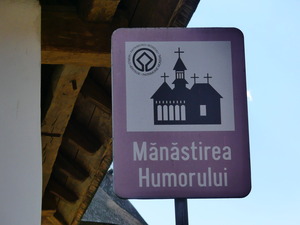 (photo by Clyde)
(photo by Clyde)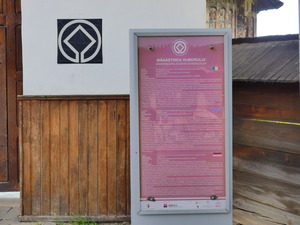 (photo by Clyde)
(photo by Clyde)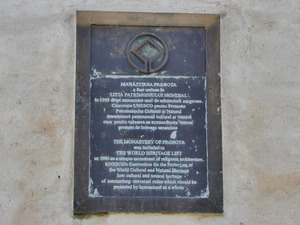 (photo by Clyde)
(photo by Clyde)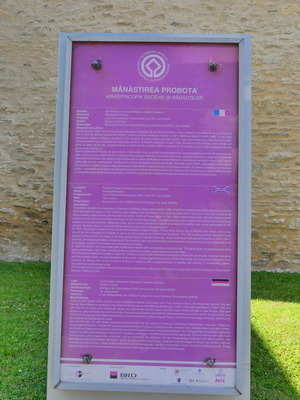 (photo by Clyde)
(photo by Clyde)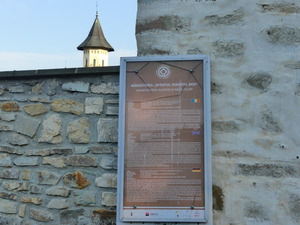 (photo by Clyde)
(photo by Clyde)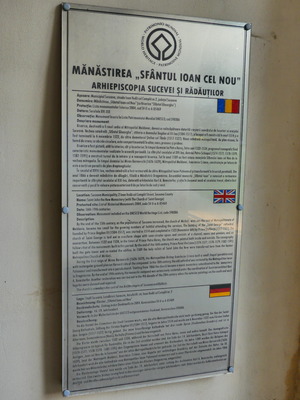 (photo by Clyde)
(photo by Clyde)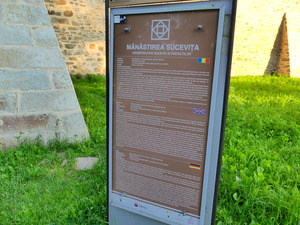 (photo by Clyde)
(photo by Clyde)